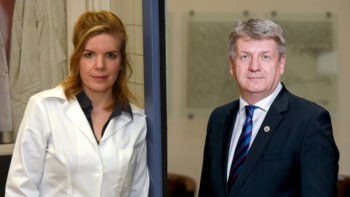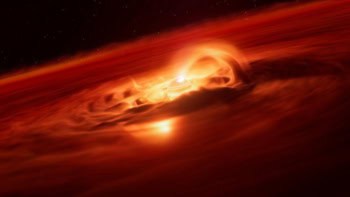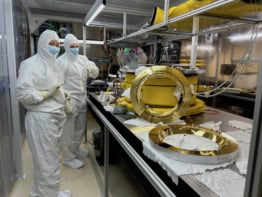The Microlensing Planet Search (MPS) collaboration has discovered the smallest known planet orbiting another star (Astrophysical Journal April 2000). The planet has a mass between that of the Earth and Neptune, which is 17 times more massive than the Earth, and was detected using a microlensing technique.
“Microlensing is the only way low-mass planets can be detected from the ground,” says Sun Hong Rhie from the University of Notre Dame and a member of MPS team. Rhie and his colleague David Bennett have proposed a space-based observatory called GEST that would use microlensing techniques to search for other low-mass planets. GEST would monitor over 200 million stars which, the team hopes, would allow them to observe over 100 Earth-mass planets during its two-and-a-half year lifetime (astro-ph/0003102).
The microlensing technique only works with planetary systems that are in the foreground of the Galactic bulge or the inner Galactic disk. A planetary system in this area acts as a gravitational lens that bends and amplifies the light from the objects behind it. As planets orbit their star, they will slightly perturb the gravitational lens and hence cause a brief variation in the light seen from the Earth. These variations provide the mass of the planet and the distance between the planet and its star. The GEST observatory would have a 1.5 metre mirror and a CDD camera containing 1.3 billion pixels.
Rhie and Bennett are cautiously organising support for the telescope, which they hope will be launched in 2005. “GEST sounds like a great idea to me,” says John Bahcall from Institute for Advanced Studies in Princeton University, “but I don’t know what its funding chances are.” Will Sutherland from Oxford University is slightly more optimistic: “Clearly exoplanets are a big growth area, so there must be a reasonable chance of getting funding,” he says.



